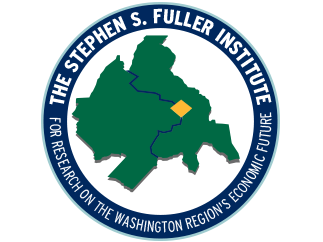From The Washington Business Journal:
Greater Washington’s job growth in the second half of 2016 has been revised downward and that has regional economists worried about the region’s resilience in the face of potential federal spending cuts.
The D.C. region added 55,600 jobs in 2016, according to final data released Tuesday by the Bureau of Labor Statistics — about 16,800 fewer than the agency had initially counted. The downward revision was reflected largely in only the last few months of the year, according to economist Stephen Fuller.
The preliminary estimate of 72,400 jobs added would have given Greater Washington its largest increase since 2000, but the revisions mean job growth lagged behind 2015.
The biggest increase in jobs came from professional and business services. Originally the BLS said that area had gained 20,200 jobs, but that has been revised downward to 17,000. And preliminary data that showed 8,700 new retail jobs was erased. Just 700 new retail jobs were added, according to Fuller, who expanded on his research in a blog post.
“This clearly is a yellow caution flag. And I don’t know that the region is at all prepared to respond to it,” he said in an interview.
Fuller has called for a collective approach by the region to boost the number of high-paying jobs not reliant on the federal government. So far the region has struggled to do so.
The jobs numbers show the region is not positioned to weather large cuts in federal spending, and that cuts proposed by the Trump administration are going to come faster than the economy can grow new ones, Fuller added.
“We are vulnerable and we haven’t gotten less vulnerable,” Fuller said. And while it is common for the BLS to revise its preliminary numbers, he said it was unusual for them to be revised this significantly.
Not all job sectors saw downward revisions. Financial activities added 2,600 jobs — more than the 300 originally anticipated. Transportation and utilities added 900 jobs, up from the 700 originally counted by the BLS. But construction jobs were revised downward, from 6,700 to 5,100. State and local government jobs originally came in at 4,900 but were revised down to just 1,600.
The weaker-than-expected job growth numbers come just ahead of a Thursday announcement by the Trump administration of its budget.The proposed budget, as laid out by The Washington Post, calls for $54 billion in defense spending with the same amount of cuts in non-defense spending.
That could cause area employment to fall by 1.8 percent, personal income by 3.5 percent and housing prices by 1.9 percent. The Post attributes those estimates to an economic analysis by Mark Zandi, chief economist for Moody’s Analytics.
“We are talking slashing and burning several different agencies on the discretionary, nondefense side. That could have a pretty chilling effect for the local economy,” said Clifford Rossi, a professor of the practice at the Robert H. Smith School of Business at the University of Maryland-College Park.
Rossi agreed that the revised job growth numbers reveal an economy that was weaker than it originally appeared, and that the federal spending cuts proposed by Trump could have a compound effect on the regional economy. It could also dampen Greater Washington’s red-hot housing market.
“It just puts pressure on the economy,” Rossi said, “and it’s a weaker economy than we thought was already there.”
View the full story ›
Copyright Washington Business Journal, reprinted with permission
